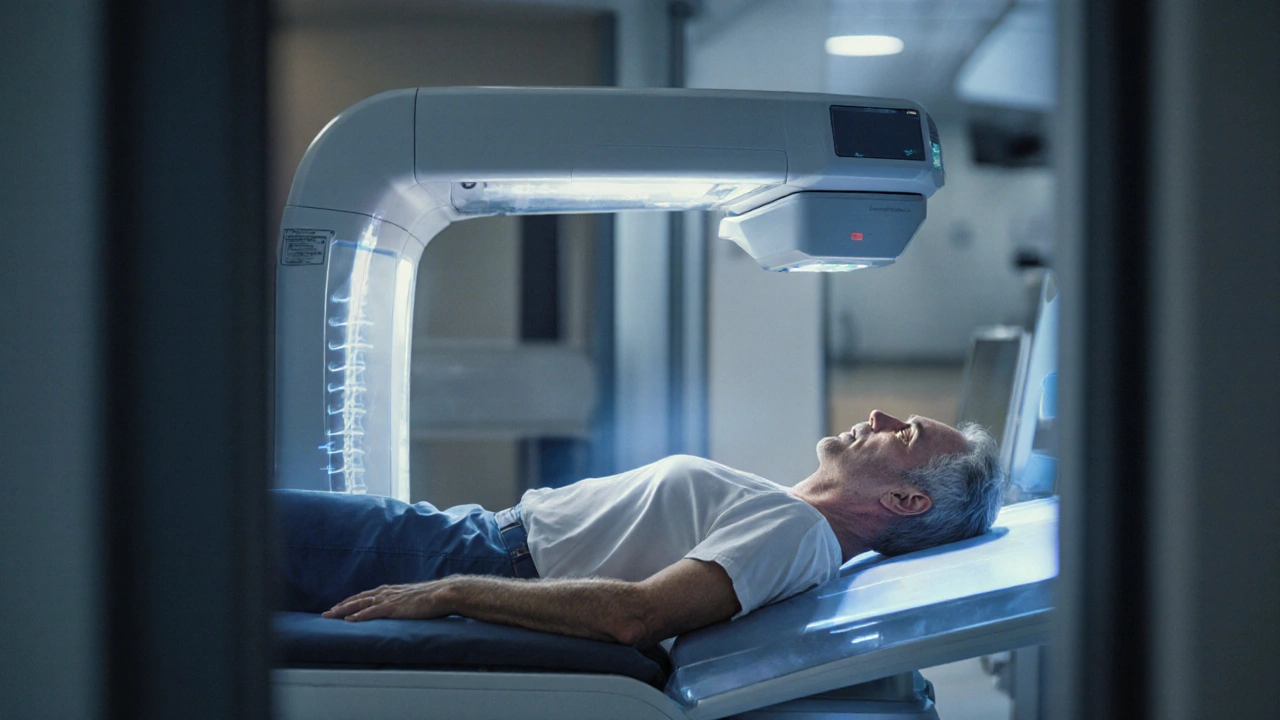Bone Density Testing: What You Need to Know
When you hear about Bone Density Testing, a medical assessment that measures mineral content in bones to evaluate strength and fracture risk. Also known as bone mineral density test, it helps doctors decide on preventive or therapeutic steps. The most common way to perform this check is with a DEXA scan, dual‑energy X‑ray absorptiometry, the leading imaging technique for measuring bone density. This scan uses low‑dose X‑rays to create a precise picture of bone mineral density (BMD) at the hip, spine, and sometimes the forearm. Because the procedure is quick, painless, and generally covered by insurance, it’s the go‑to tool for doctors who want to spot bone loss early. Understanding bone density testing sets the stage for the rest of your bone health journey.
Why bone density testing matters
One major reason doctors order a test is to diagnose Osteoporosis, a condition where bones become porous and fragile, often identified through bone density testing. If your BMD score falls below the threshold, you’re at a higher chance of breaking a bone from a minor fall. Early detection lets you start treatment before a fracture occurs. Alongside medical interventions, many patients turn to Calcium supplementation, the practice of adding calcium tablets or fortified foods to support bone health. Adequate calcium works hand‑in‑hand with vitamin D to rebuild bone matrix, which can improve future scan results. Lifestyle choices—weight‑bearing exercise, quitting smoking, limiting alcohol—also feed into the same equation. In short, bone density testing connects the dots between disease, nutrition, and daily habits, giving you clear targets for improvement.
Beyond spotting osteoporosis, the test feeds into a broader risk picture. Doctors often plug your BMD numbers into the FRAX calculator, which estimates your 10‑year fracture risk based on age, gender, previous fractures, and other health factors. This assessment helps decide whether you need medication like bisphosphonates or just lifestyle tweaks. Knowing how often to repeat the test is also key; most guidelines suggest a follow‑up scan every two to three years for stable patients, or sooner if you start a new treatment. Interpreting results isn’t just about a single number—it's about trends, personal risk factors, and actionable steps you can take right now. Below you’ll find articles that walk through each of these pieces, from how the DEXA scan works to choosing the right calcium supplement, and how to use FRAX scores to guide your next move.
Why Bone Density Testing Is Crucial for Managing Paget’s Disease
Learn why bone density testing is essential for Paget's disease, how DXA scans guide treatment, and practical steps to reduce fracture risk.

